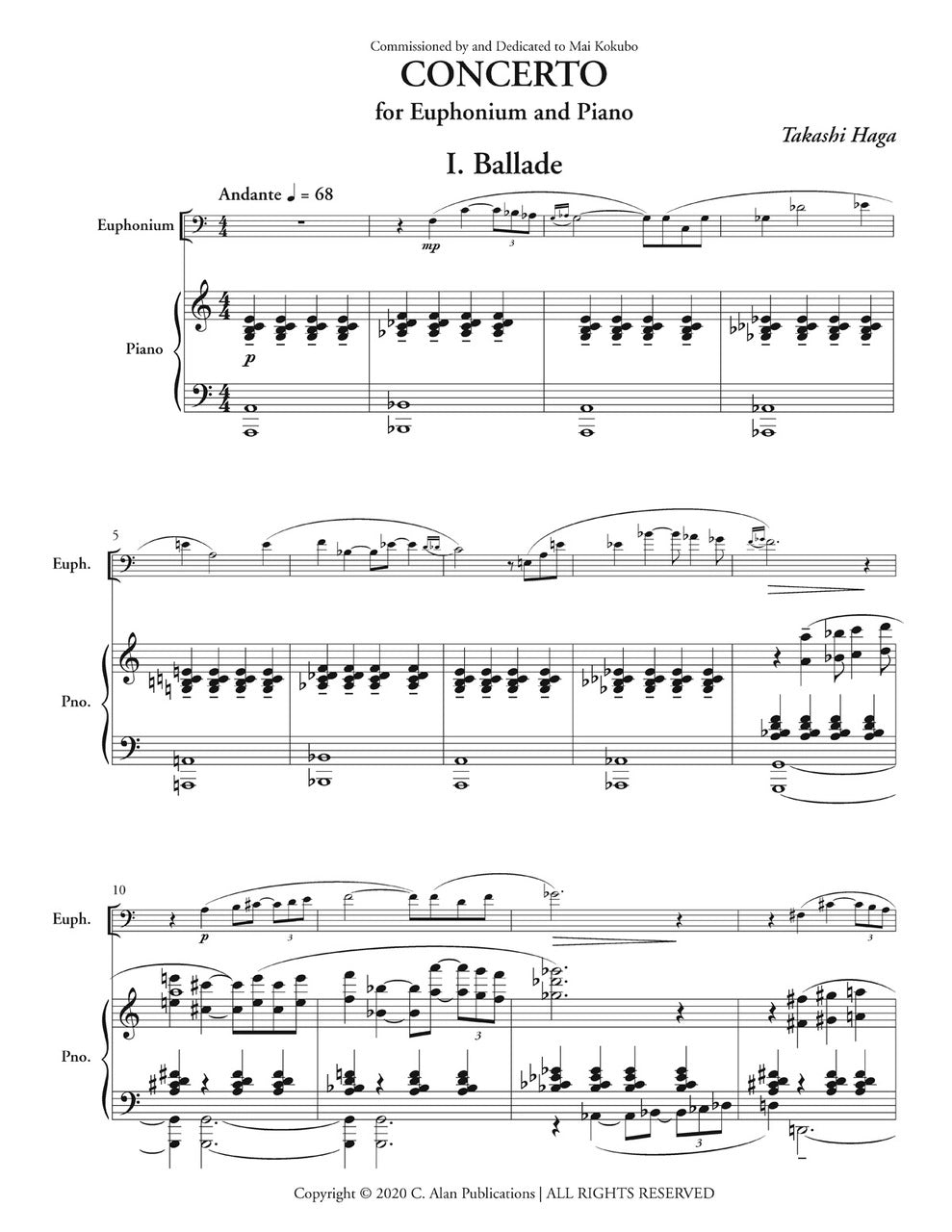C Alan Publications
Haga, Takashi - Concerto
Haga, Takashi - Concerto
Couldn't load pickup availability
From the publisher:
Featuring three contrasting movements, exciting rhythms, modern harmonies, and lyrical melodies, Takashi Haga's Concerto for Euphonium is able to show off all of the instrument's features in one piece.
Duration: 17:00
Parts: Piano Score, BC/TC
The Concerto for Euphonium was commissioned by Mai Kokubo in 2019. She commissioned the concerto when we met the first time just after I described my love for the beautiful tone and high functionality of the euphonium. Her energetic personality is infectious, especially when she plays a passage using her poetic sense and follows the phrase thoughtfully to its conclusion. The concerto consists of three movements with different characters, and I hope listeners can enjoy how the euphonium uses its various charms throughout.
Ballade - There is no solid definition of a ballade, but many of them include lyrical melodies and dramatic ideas. With this music I tried to highlight the charm of the euphonium and enable performers to show off their sense of phrasing and technical skills, such as sharp attacks. The music is in ternary form and consists of a prelude, the main theme, and a postlude, and the main theme itself forms a ABACABA rondo in which the main theme repeatedly appears. The movement exhibits the contrast between the euphonium’s melody, with quick dotted rhythms, performed freely above the slithering chromatic bass notes. This movement was premiered by Mai Kokubo at the 2019 International Tuba Euphonium Conference at the University of Iowa.
Pastorale éphémère - “Pastorale” refers to a piece of music with a pastoral nature, generally in six-eight time. The French word “éphémère” in the title means “ephemeral” in English, which I represented with the interval of a second in the piano part which helps color the movement’s key of B-flat major. In the first half, the euphonium’s long, singing melody floats over a gentle accompaniment. The music ends quietly after a short cadenza at the end of its simple ABA ternary form.
Finale - This finale maintains the quick tempo established in the beginning of the movement. I intended to make this movement a mini-concerto for euphonium and piano, rather than treating the piano as merely accompaniment. The characteristics of the music change frequently in the piano part, which has fragments which are echoed and developed by the euphonium’s. The movement features challenging techniques for both the euphonium and piano players, who each perform quick passages covering their full ranges.
-T.H.














